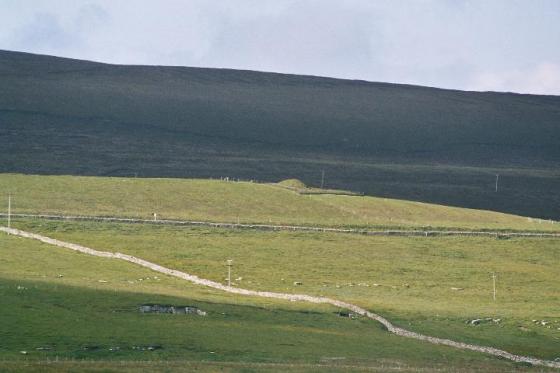RCAMS 273 the Redland standing stone was, and stil is, the most visible piece of Redland South’s stonework. Until the 1880s, when a farmer smashed it to stop livestock using it as a rubbing stone, it stood about 2m high. The irregularly topped stump is described in the late 1920s as 12 or 16” high by 3’ broad by 6” thick, and aligned ENE/WSW like Staneyhill. At that time the 4’8” upper fragment, tapering to a 2’7” squared off top, lay where it fell. In 1929 the ground around the stone was described as irregular with some small earthfast stones with the smaller stump of another standing stone mere feet away. So the excavation we see here is 1930 or later. More to follow on the cairn proper when I’ve sifted through photos from three visits. Cairn is in two fields on your right as you go from the Evie road to the Broch of Gurness





































































































































































